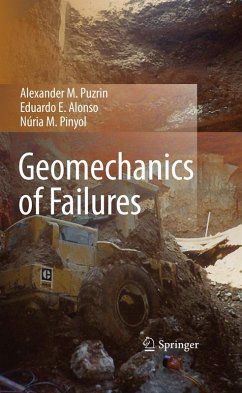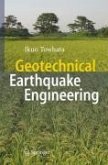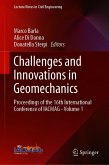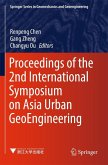It is not an easy task to fascinate a student with a standard course on Soil Mechanics and Geotechnical Engineering. If, however, the same material is presented as a tool to explore a natural or a man-made "disaster", both the motivation and the ability to absorb this material increase dramatically. The case studies in this book could help to build an introductory Forensic Geotechnical Engineering course, covering such basic topics as settlements, bearing capacity and excavations.
The failure cases considered in this book have something in common - they can be all reasonably well explained using so called "back-of-the-envelope" calculations, i.e., without sophisticated models requiring finite element analysis. These simple methods based on clear mechanical considerations are the endangered species of the computer dominated era, though sometimes they could prevent a disaster caused by a wrong application of computer models. In particular, the upper bound limit analysis has repeatedly proven itself as a powerful tool allowing for sufficiently accurate estimates of the failure loads and leaving a lot of room for creativity.
No one is exempt from making mistakes, but repeating well known mistakes reveals a gap in education. One of the objectives of this book is to attempt bridging this gap, at least partially. More failure cases covering a larger area of geotechnical problems are included into the companion book "Geomechanics of Failures: Advanced Topics" by the same authors.
The failure cases considered in this book have something in common - they can be all reasonably well explained using so called "back-of-the-envelope" calculations, i.e., without sophisticated models requiring finite element analysis. These simple methods based on clear mechanical considerations are the endangered species of the computer dominated era, though sometimes they could prevent a disaster caused by a wrong application of computer models. In particular, the upper bound limit analysis has repeatedly proven itself as a powerful tool allowing for sufficiently accurate estimates of the failure loads and leaving a lot of room for creativity.
No one is exempt from making mistakes, but repeating well known mistakes reveals a gap in education. One of the objectives of this book is to attempt bridging this gap, at least partially. More failure cases covering a larger area of geotechnical problems are included into the companion book "Geomechanics of Failures: Advanced Topics" by the same authors.
Dieser Download kann aus rechtlichen Gründen nur mit Rechnungsadresse in A, B, BG, CY, CZ, D, DK, EW, E, FIN, F, GR, HR, H, IRL, I, LT, L, LR, M, NL, PL, P, R, S, SLO, SK ausgeliefert werden.
From the reviews:
"The main goal of this text is to illustrate how basic concepts in soil mechanics can be used as a 'forensic' tool in the investigation of geotechnical failures. ... provide a detailed and step-by-step description of the hypothesis introduced and of the analysis performed. ... Each chapter is self-contained and provides a review of soil mechanics principles and methods. The target audience is undergraduate and graduate students, faculty and practising professionals in the field of Civil and Geotechnical engineering." (International Journal of Mining, Reclamation and Environment, Vol. 25 (1), March, 2011)
"The main goal of this text is to illustrate how basic concepts in soil mechanics can be used as a 'forensic' tool in the investigation of geotechnical failures. ... provide a detailed and step-by-step description of the hypothesis introduced and of the analysis performed. ... Each chapter is self-contained and provides a review of soil mechanics principles and methods. The target audience is undergraduate and graduate students, faculty and practising professionals in the field of Civil and Geotechnical engineering." (International Journal of Mining, Reclamation and Environment, Vol. 25 (1), March, 2011)









